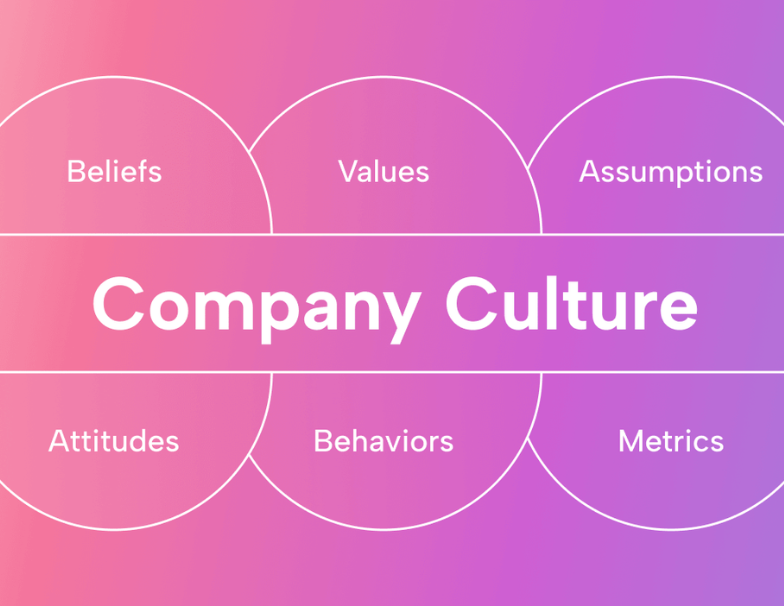7 Proven Strategies to Enhance Work Culture Today

Work culture shapes every interaction and decision in a workplace. Why is it so crucial? A positive work culture boosts employee morale, productivity, and retention. This article explores why work culture matters and offers practical strategies to improve it.
Key Takeaways
- A strong work culture, driven by clear company values and leadership communication, directly impacts employee engagement, retention, and overall organizational success.
- Positive workplace culture enhances financial performance, leading to higher employee satisfaction and productivity, which ultimately benefits the organization’s bottom line.
- Key strategies for improving work culture include promoting open communication, encouraging collaboration, investing in employee recognition and development, and ensuring a diverse and inclusive environment.
Understanding Work Culture

Employee attitudes and behaviors shape the work culture of an organization. This culture acts as an invisible hand, guiding how employees interact, make decisions, and approach their work. Organizational culture fundamentally includes values, beliefs, attitudes, and the systems and rules that influence employee behavior. These fundamental elements are the DNA of a company’s culture, shaping everything from daily routines to long-term strategies.
Company values play a crucial role in guiding employees on expected behaviors and matters of importance in a workplace. These values, along with the company’s mission, align employee behaviors with business goals. When employees understand and embrace these company’s core values, their actions are more likely to reflect the company’s culture and objectives. Workplace culture is not static; it evolves over time and requires continuous assessment and dialogue to remain relevant and effective.
Leadership communication and employee interactions significantly influence the development of workplace culture. A strong workplace culture can positively affect how customers and stakeholders perceive the organization, enhancing its reputation and success. Ultimately, work culture determines the workplace atmosphere and greatly impacts employee engagement and organizational success.
Importance of a Positive Work Culture

A positive workplace culture is a cornerstone of organizational success. It enhances employee engagement and retention, which are critical for maintaining a competitive edge. Feeling valued and supported enhances employee performance and satisfaction, resulting in better business outcomes. Prioritizing a strong culture positions organizations to attract top talent and maintain a competitive edge in the market, fostering a positive company culture.
Financially, a supportive workplace culture can lead to impressive results. Companies with positive workplace cultures often experience higher average annual returns and significant revenue growth over time. A strong work culture positively affects financial performance by fostering higher engagement, productivity, loyalty, and reduced turnover. In essence, investing in a healthy workplace culture pays dividends in both employee happiness and organizational success, contributing to financial success.
Moreover, a positive culture directly impacts employee well-being. A supportive positive environment can significantly enhance job performance and satisfaction, making it a critical aspect of organizational success. A positive work environment supports employees’ mental and emotional health, resulting in a more engaged and productive workforce.
Key Elements of a Thriving Culture

Several key elements contribute to a thriving work culture:
- Trust and psychological safety enable employees to express their opinions freely and without fear of retribution.
- A sense of belonging increases employee engagement and commitment to the organization.
- Clear communication among employees enhances psychological safety and encourages idea sharing.
Leadership is key in fostering teamwork and promoting open communication. Recognizing collaborative achievements and fostering mutual respect among team members contribute to a positive work atmosphere. Organizations that align their operations with shared values see greater employee engagement and innovation, supported by a strong leadership team.
Enhancing creativity and innovation requires promoting diversity of thought alongside traditional demographic diversity. Companies that prioritize recognition often enjoy a desired culture that promotes respect and appreciation among employees, contributing to the existing culture. These elements together create a strong foundation for a thriving and positive work culture.
Recognizing a Positive Work Environment

To recognize a positive work environment, look for specific indicators that reflect a healthy workplace culture. Positive interactions among employees, characterized by mutual respect and support, are key signs of a thriving culture. Genuine employee interactions and transparent company practices also strongly indicate a positive workplace culture, contrasting with a toxic work culture. Additionally, these factors contribute to creating positive work environments.
Low employee turnover often suggests a positive company culture, reflecting high employee satisfaction. Valuing mental health contributes to higher job satisfaction and lower turnover rates, as employees feel supported and valued for their well-being. Companies like Etsy, where employees feel valued for who they are and what they can contribute, exemplify a positive work environment.
Employee feedback mechanisms, such as surveys, offer valuable insights into company culture and help identify areas for improvement. An autonomous environment, where employees feel trusted and empowered to make decisions, also indicates a positive work environment. Costco’s encouragement of employee participation in decision-making exemplifies a commitment to fostering autonomy and engagement.
Strategies to Improve Work Culture
Deliberate and strategic actions are necessary to improve work culture. Key strategies include establishing clear core values, promoting open communication, and encouraging collaboration.
These elements foster a positive workplace culture where employees feel valued, supported, and motivated to contribute their best.
Establish Clear Core Values
Clearly defined cultural values are crucial for establishing a strong work culture. Core values provide a guiding framework for employee behaviors, ensuring consistency in decision-making and aligning actions with organizational goals. These values must be relatable and actionable for every employee to ensure they guide organizational behavior effectively, as outlined by the competing values framework.
Integrating diversity, equity, and inclusion (DEI) into core values emphasizes their importance and ensures these principles are woven into the organizational culture. Clearly communicated core values embraced by all employees foster a strong and cohesive workplace culture.
Promote Open Communication
Transparent communication fosters trust and collaboration among employees. Regular feedback and constructive criticism are signs of a healthy work culture, as they help identify and address issues before they escalate. Implementing regular employee surveys can help organizations identify strengths and weaknesses in their culture, providing a basis for continuous improvement.
Inclusive language in communication accommodates a diverse workforce, especially in global teams. Regularly listening to employee feedback helps organizations identify effective diversity initiatives and potential barriers. Open communication promotes mutual respect and encourages collaboration, building a positive workplace culture.
Encourage Collaboration
Collaboration is crucial for building a positive work culture. Clear departmental goals improve teamwork and individual performance. Establishing strong anti-discrimination policies is also essential to define unacceptable negative behaviors and promote inclusiveness.
Team-building activities and mutual respect significantly enhance and build collaboration. Fostering new ideas and open communication within teams creates an environment where employees feel valued and motivated to contribute their best.
The Role of Leadership in Shaping Culture

Effective leadership is key to fostering a positive work environment. Leaders set the tone, model values, and advocate for culture within the organization. When leaders embody organizational values, they create a cohesive culture that motivates employees and aligns their behaviors with the company’s goals.
Committed leadership is vital for building a positive culture. If leaders fail to embody the organization’s values, it can undermine cultural efforts and lead to employee disillusionment. Effective leaders create a supportive environment where employees feel motivated, engaged, and able to work collaboratively.
Leaders play a key role in modeling behaviors that support the corporate culture. By demonstrating values, fostering discussions, and integrating feedback, leaders effectively promote workplace culture. Managers directly impact employee engagement and performance, making it vital for them to lead with conviction and adhere to core values.
Employee Recognition Programs
Regular recognition of employee contributions leads to higher employee retention rates and job satisfaction. Recognizing achievements enhances employee morale and commitment to the organization. Frequent acknowledgment of efforts can nearly triple workplace engagement.
High levels of recognition correlate with:
- Increased job satisfaction and overall workplace happiness.
- Improved employee performance and productivity by reinforcing positive behaviors.
- Significantly reduced voluntary employee turnover through structured recognition programs.
An employee recognition program encourages high performance, makes employees feel valued, and fosters friendly competition. Leadership should take a leading role in employee recognition to model the importance of valuing contributions. Personalized recognition enhances belonging and strengthens employee connections to the organization.
Fostering Professional Development
Investing in employee development is critical for maintaining engagement and motivating staff to grow within the company. A culture of learning increases engagement, loyalty, and motivation among employees. Demonstrating investment in staff growth can be achieved through training initiatives, coaching, and new responsibilities.
A culture of continuous learning attracts top talent who value growth opportunities. Customized development plans align individual skills with organizational needs. Implementing mentorship programs can significantly aid talented employees in navigating their career paths.
Ways to support employee development include:
- Peer-led learning opportunities that allow employees to take charge of their professional development.
- Cross-departmental training that enhances skills and fosters inter-department collaboration.
- Managers provide feedback, advice, and professional development opportunities to support employees’ performance.
Creating a Diverse and Inclusive Workplace
Promoting diversity, transparency, and understanding enhances the employee experience. Recognizing and celebrating diversity, equity, inclusion, and belonging (DEIB) is essential. This approach helps build a strong organizational culture. Leaders shape workplace culture by prioritizing employee well-being and fostering an inclusive environment.
A culture valuing diversity boosts employee engagement and loyalty. Promote diversity by adjusting hiring practices to be more inclusive. Integrate diversity as a core value in the recruitment strategy. Welcoming individuals from all backgrounds and celebrating differences is key to promoting workplace diversity and inclusiveness.
Diversity leads to better, more well-rounded organizational decisions. A diverse workforce:
- Enhances creativity, innovation, and agility
- Values individual differences, empowering employees to leverage their unique skills
- Recognizes and enhances individual abilities, providing a competitive advantage
Maintaining a Healthy Work-Life Balance
Investing in employee well-being through support systems boosts loyalty and productivity. Caring for employees’ physical, mental, and emotional health is essential. Companies can support mental well-being by offering various resources. These resources may include counseling services, mental health days, or stress management programs.
Expectations for flexible work arrangements have increased, particularly after the pandemic, impacting employee satisfaction. Offering flexible work schedules and support during personal situations is crucial to attracting today’s workers. A hybrid work environment with two to three in-person days each week is recommended. This approach can help enhance the overall work culture.
Strategies for managing stress include:
- Setting achievable daily goals to help employees feel a sense of control and accomplishment.
- Taking regular breaks during work to clear the mind and manage stress.
- Clearly distributing household responsibilities to prevent confusion and reduce stress at home.
- Engaging in regular physical activity, which is linked to lower stress levels and improved coping mechanisms.
Summary
A thriving work culture is essential for organizational success. By understanding the importance of workplace culture and implementing strategies such as establishing core values, promoting open communication, and encouraging collaboration, companies can create a positive and productive work environment. Leadership plays a crucial role in shaping culture, and employee recognition programs and professional development opportunities further enhance employee engagement and satisfaction.
Creating a diverse and inclusive workplace and maintaining a healthy work-life balance are also key components of a positive work culture. Many forward-thinking platforms now offer tools and services that help organizations build such environments; for example, companies like Offsite specialize in experiences that strengthen team cohesion and reinforce company culture through thoughtfully designed retreats and collaborative initiatives. By investing in these areas, organizations can foster a supportive and engaging environment where employees can thrive. Remember, a positive work culture is not just about the bottom line—it’s about creating a place where everyone feels valued and motivated to contribute their best.
FAQs
- What are the key elements of a thriving work culture?What are the key elements of a thriving work culture?
A thriving work culture is built on trust and psychological safety, clear communication, mutual respect, and shared values. Fostering these elements will create an environment where employees can thrive and succeed.
- How does leadership influence workplace culture?
Leadership profoundly shapes workplace culture by embodying the organization's values and promoting open communication, which enhances employee engagement and performance. This alignment between leadership and culture is essential for fostering a positive work environment.
- Why are employee recognition programs important?
Employee recognition programs are crucial as they boost morale, enhance job satisfaction, and improve retention rates, ultimately fostering a culture where employees feel valued for their contributions.
- What strategies can improve work culture?
Improving work culture can be effectively achieved by establishing clear core values, promoting open communication, encouraging collaboration, and fostering professional development. Implementing these strategies will create a more positive and engaging work environment.
You may also like
Unique spaces for your next offsite
Find distinctive venues for your upcoming corporate retreat.
Stay Updated with Our Insights
Get exclusive content and valuable updates directly to you.







